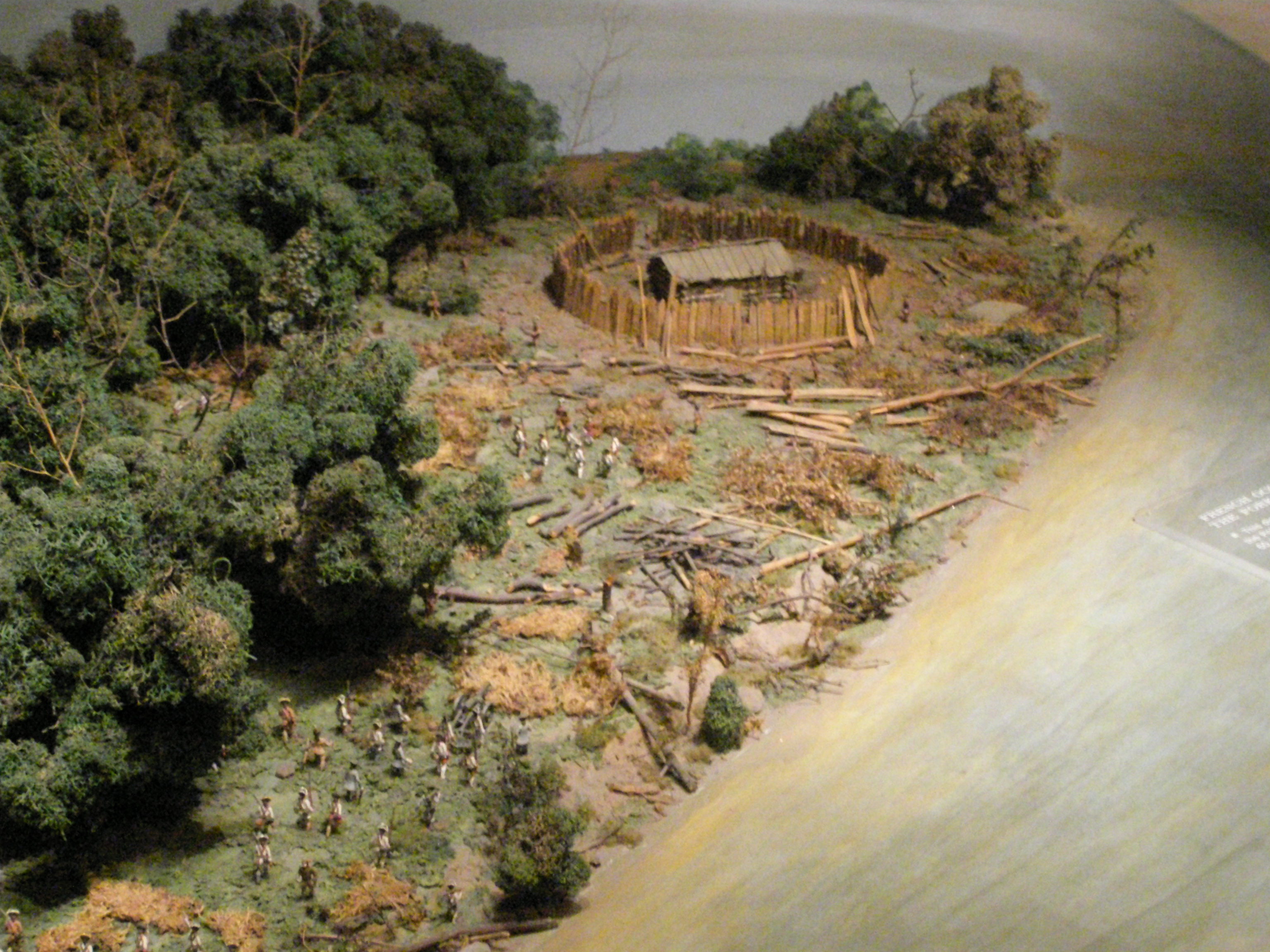Fort Prince George on:
[Wikipedia]
[Google]
[Amazon]
 Fort Prince George was an uncompleted fort on what is now the site of
Fort Prince George was an uncompleted fort on what is now the site of
 Fort Prince George was an uncompleted fort on what is now the site of
Fort Prince George was an uncompleted fort on what is now the site of Pittsburgh
Pittsburgh ( ) is a city in the Commonwealth (U.S. state), Commonwealth of Pennsylvania, United States, and the county seat of Allegheny County, Pennsylvania, Allegheny County. It is the most populous city in both Allegheny County and Wester ...
, at the confluence of the Allegheny and Monongahela River
The Monongahela River ( , )—often referred to locally as the Mon ()—is a U.S. Geological Survey. National Hydrography Dataset high-resolution flowline dataThe National Map accessed August 15, 2011 river on the Allegheny Plateau in north-c ...
s in Allegheny County, Pennsylvania. The site was originally a trading post established by Ohio Company
The Ohio Company, formally known as the Ohio Company of Virginia, was a land speculation company organized for the settlement by Virginians of the Ohio Country (approximately the present U.S. state of Ohio) and to trade with the Native Americ ...
trader William Trent in the 1740s. Construction of Fort Prince George, named for the crown prince and later King George III
George III (George William Frederick; 4 June 173829 January 1820) was King of Great Britain and of Ireland from 25 October 1760 until the union of the two kingdoms on 1 January 1801, after which he was King of the United Kingdom of Great B ...
), was begun in January 1754 by 41 Virginia
Virginia, officially the Commonwealth of Virginia, is a state in the Mid-Atlantic and Southeastern regions of the United States, between the Atlantic Coast and the Appalachian Mountains. The geography and climate of the Commonwealth are ...
ns. The plan to occupy the strategic forks was formed by Virginia Lieutenant Governor Robert Dinwiddie, on the advice of Lieutenant Colonel George Washington
George Washington (February 22, 1732, 1799) was an American military officer, statesman, and Founding Father who served as the first president of the United States from 1789 to 1797. Appointed by the Continental Congress as commander of ...
, whom Dinwiddie had sent on a mission to warn French commanders they were on English territory in late 1753, and had made a military assessment of the site. Captain Trent commanded the force constructing the fort, but his men were captured by 1,000 French soldiers and Indians led by Claude-Pierre Pécaudy de Contrecœur Claude-Pierre Pécaudy de Contrecœur was an officer in the colonial regular troops ( troupes de la marine), seigneur, and member of the Legislative Council of New France. Born on December 28, 1705 at Contrecœur, Quebec, son of Francois-Antoine Pà ...
. At the time of the French arrival, Trent was at Wills Creek for a conference, while his second-in-command, Lieutenant John Fraser, was at his own plantation at Turtle Creek on the Mononghela River. Ensign Edward Ward was left to surrender the fort on April 18, 1754. The French attack was the hostile act of the war, and it led to George Washington
George Washington (February 22, 1732, 1799) was an American military officer, statesman, and Founding Father who served as the first president of the United States from 1789 to 1797. Appointed by the Continental Congress as commander of ...
's own surprise attack at the Battle of Jumonville Glen.
Lieutenant Fraser was court-martialled for desertion at Williamsburg, but he was acquitted and later served as Chief of Scouts to General Edward Braddock
Major-General Edward Braddock (January 1695 – 13 July 1755) was a British officer and commander-in-chief for the Thirteen Colonies during the start of the French and Indian War (1754–1763), the North American front of what is known in Europ ...
's army.
This was the first of five forts that would be built to control the strategic "Forks of the Ohio". The French erected Fort Duquesne
Fort Duquesne (, ; originally called ''Fort Du Quesne'') was a fort established by the French in 1754, at the confluence of the Allegheny and Monongahela rivers. It was later taken over by the British, and later the Americans, and developed a ...
after seizing Fort Prince George. Then the British built Fort Pitt after they captured the French post in the 1758 Forbes Expedition. Mercer's Fort was a temporary British fort built to defend against a French counterattack while Fort Pitt was being constructed. The final fort in what is now downtown Pittsburgh was an American post called Fort Lafayette and was located farther up the Allegheny River.
References
* * {{DEFAULTSORT:Prince George French and Indian War forts Forts in Pennsylvania Colonial forts in Pennsylvania British forts in the United States History of Pittsburgh